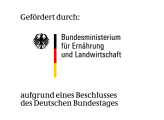Project




We use cookies. Some are required to offer you the best possible content and functions while others help us to anonymously analyze access to our website. (Matomo) Privacy policy
Necessary cookies are absolutely essential for the proper functioning of the website. This category only includes cookies that ensure basic functionalities and security features of the website. These cookies do not store any personal information.
| Cookie | Duration | Description |
|---|---|---|
| PHPSESSID | Session | Stores your current session with reference to PHP applications, ensuring that all features of the site can be displayed properly. The cookie is deleted when the browser is closed. |
| bakery | 24 hours | Stores your cookie preferences. |
| fe_typo_user | Session | Is used to identify a session ID when logging into the TYPO3 frontend. |
| __Secure-typo3nonce_xxx | Session | Security-related. For internal use by TYPO3. |
With cookies in this category, we learn from visitors' behavior on our website and can make relevant information even more accessible.
| Cookie | Duration | Description |
|---|---|---|
| _pk_id.xxx | 13 months | Matomo - User ID (for anonymous statistical analysis of visitor traffic; determines which user is being tracked) |
| _pk_ses.xxx | 30 minutes | Matomo - Session ID (for anonymous statistical analysis of visitor traffic; determines which session is being tracked) |
We use cookies. Some are required to offer you the best possible content and functions while others help us to anonymously analyze access to our website. (Matomo) Privacy policy